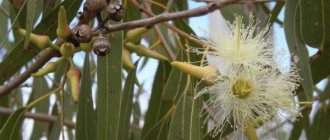Perennial phlox for growing flowers on a window in a room are dug out of the ground at the end of autumn and transplanted into a flowerpot (box). With natural light on the window, they will bloom only in May and will bloom throughout the growing season, when the day is already long enough. This is due to the fact that phlox are long-day plants and they need a day of more than 12 hours to begin flowering. If they are given additional artificial lighting, that is, the autumn-winter day is lengthened, then flowering can be achieved 50-100 days after transplanting them into a warm room (room, greenhouse) depending on the characteristics of the variety and temperature and light conditions.
In a greenhouse, with additional lighting, you can have flowering phloxes at any time, on any necessary, pre-planned date, for the New Year, March 8, etc. In our experiments, with additional lighting from incandescent lamps, they bloomed after 80 days, and under xenon lamps after 50-60 days.
In phlox, unlike many other flowers (tulips, crocuses, hyacinths, peonies), flower harvests can be obtained several times a year. After cutting the flowers, the shoots growing from the axils of the leaves, as well as from the rhizomes, bloom quite quickly - naturally, with a long day. They, unlike similar shoots of other plants, do not need prolonged exposure to low temperatures or vernalization for new flowering. Therefore, under favorable conditions, phlox can bloom all year round. They can produce several harvests of flowers in a year, unlike many other flower crops, which are widely used for forcing flowers in winter.
Due to the fact that the shoots of phlox regrowth are able to proceed to flowering without prior exposure to low temperatures (for vernalization), it is possible to regulate the timing of their flowering to some extent. Thus, in one of our experiments, shoots at a height of 30 cm were cut off from two varieties of perennial phlox, Snow White (white) and Mechta (red), on July 1. As a result, their mass flowering was delayed by almost a month.
Annual phloxes bloom easily when sown in spring and summer in a room on a window. So in our experiments, when sown on July 25, they bloomed together by November 1, that is, with a short natural day. The lighting intensity here was 3-4 times weaker than in the open ground, where at that time it was also low.
An indelible impression is made by phlox, especially red, blooming on a window on New Year's Eve against the background of white snow or a frozen white window.
These perennial fragrant flowers are loved by many for their attractive appearance, but they are not too demanding to care for. It is enough to figure out how to grow phlox and provide them with the necessary conditions. You can grow phlox at home in a pot or on a plot.
Selection and preparation of a landing site
To get a beautiful flower bed, you need to know how to grow phlox. Perennials grow well in sunny areas, but some shade is also acceptable. It is recommended to protect plants from strong winds.
Important! Perennial varieties with dark flowers are best planted in a little shade - they fade in the sun.
Phloxes like east, west, southwest or southeast sides. The soil for planting should not be close to groundwater. Flowers grow well on loamy substrates with neutral acidity. The soil must have high breathability and be enriched with nutrients.
FAQ
- Why do phloxes turn yellow?
If there are no other symptoms, such as damage by insect pests or bacterial diseases, yellowing of the leaves can be caused by insufficient watering, or it is a natural process that should not cause alarm - some of the leaves die, new ones grow.
- Why do phlox bloom late?
Phlox grows well in both bright sun and partial shade. But with a lack of ultraviolet light, flowering occurs later, and the flowers become smaller and pale, while they become more elongated in length.
How to plant a crop correctly
It is necessary to ensure that the soil is moist at the time of planting. In dry weather, additional watering is required, and then loosening to a depth of about 15 cm. Phlox is mainly propagated by dividing the root. Sowing scheme - tapes, one-, two- or three-line. The distance between them is maintained at around 70 cm, the lines in the tape are spaced 40 cm apart, and the plants should be spaced 35 cm apart. If a perennial is planted for landscaping, the number of plants is taken into account, the norm is 6 pieces per 1 m2.
Important! During planting, the roots should be well straightened. It is important not to deepen the eyes too much, no more than 5 cm, taking into account soil settlement. With a higher planting there is a risk of damage to plants from cold weather. After the phloxes are planted, they need to be watered well. When the soil dries out and settles a little, it is loosened and mulched with peat.
Where to buy seeds of large-flowered mixture of Phlox Drummond tapestry, plant photo
Growing this flower at home is quite simple, but first you need to plant it, which means finding planting material. Fortunately, this is not such a rare species that it has to be hunted.
You can buy it in a specialty store or order it online. However, in the latter case, it is important to act extremely carefully so as not to run into scammers.
Therefore, it is recommended to place orders only on trusted sites or those that are at the beginning of the issue. It is also important to pay attention to activity indicators on the site.
Another way to buy large-flowered mixtures of these short plants that bloom from June to October is to contact those who grow them in your city. This is one of the simplest options that guarantees results.
Care and cultivation
During the first time after planting, you need to carefully monitor the moisture content in the soil. It is better to water not very often, but abundantly. When loosening the soil, you must try not to harm the root system of phlox. When mulching plants, the soil surface will not dry out quickly, and in winter the plants will not be subject to frost. When planting in autumn, it is necessary to create a mulching layer of peat, shavings or straw.
Interesting! If you pinch some of the shoots in May, this prolongs the flowering of phlox by about a month.
Dividing perennial bushes is done more often in autumn or summer, but it is also possible to do this in spring. The plant has an early period of development of roots and vegetative system, immediately after the snow melts. Almost the entire root system of phlox is in the ground, no deeper than 25 cm, which is why the presence of moisture in the spring in the area where they grow is so important. A flower can grow and develop productively in one place for about 5 years, then it needs to be transplanted to another area. This procedure is carried out in autumn or spring. When flowering, it is permissible to plant phloxes in the summer.
In the climate of central Russia, spring replanting is planned for early May. The soil will absorb a lot of moisture, which is a necessary condition for the successful development of phlox. The plant will quickly take root, but you need to have time to complete all the actions within a week.
When replanting planned for autumn, they start from the timing of the flowering of phlox. In early-flowering and mid-flowering plants, buds form by the end of summer. They can be planted throughout September. Late-blooming phloxes can be transplanted until early October. There is no need to carry out any manipulations later, otherwise the plants will not be able to take root well before winter.
The bushes are divided into the required number of parts with a shovel and planted in pre-prepared holes. The buds should be underground. The distance between the bushes will depend on the height of the plant: low - 40 cm, medium - 50 cm, flowers over a meter high - 70 cm. Upon completion of the procedure, the flowers are well watered, and in hot weather they are slightly shaded.
Phlox selection: history of development
The main domestic breeder of phlox is P. G. Gaganov. It was he who created the well-known variety “Success” back in 1937. Another popular variety, which is the work of Gaganov, is “Olenka” . This variety is unpretentious and can grow in completely different conditions.
This breeder also created smoky phloxes. In 1935, Smoky Coral was born. In the 1960s, the world became acquainted with Ural Tales and Twilight . Pavel Gavrilovich created the first large-flowered variety “Slavyanka” . Its appearance dates back to 1936.
In addition to Gaganov, significant contributions to plant breeding were made by: M.P. Nagibina, M.I. Groshikova, E.D. Kharchenko, N.S. Krasnova, L.N. Sukhoruchkina and others. The varieties they created have not lost their value in our time. All of them are distinguished by their endurance, long flowering and winter hardiness.
Pest and disease control
Phlox can be affected by viruses and fungal infections . Viral diseases include:
- ring spot;
- necrotic spotting;
- rattling and curling leaves;
- variegation of flowers.
Fungal infections to which phloxes are susceptible:
- Phomasis;
- rust;
- powdery mildew;
- leaf spotting.
Note! Phlox is also exposed to mycoplasmas, which cause jaundice. Flowers infected with viruses or mycoplasmas must be destroyed to prevent the disease from spreading to healthy plants. If fungal diseases develop, preparations containing copper are suitable for treatment.
If cracks appear on the stems of plants and the leaves dry out, this may indicate improper watering or increased acidity of the soil.
Phlox care is very important
To prevent diseases, it is important to conduct preventive examinations. Phlox reproduce well, so it would be better to remove several bushes that cause suspicion than to lose all the plantings.
Pests that damage phlox:
- Leaf and stem nematodes.
Where they accumulate, swelling and curvature occur, and the flower grows poorly . The larvae of these worms do not die in winter; such a plant cannot be cured, so it is destroyed, and the soil is treated with drugs against nematodes.
Absorbs plant sap , leaving behind a whitish foamy secretion on the back of the leaf. The Inta-Vir remedy fights it.
They are active in wet weather or rain. Slugs eat leaves and buds. Special traps are placed on them, and the area next to the phlox is sprinkled with lime.
The best neighbors for phlox
Phlox on their own looks great, but that doesn't mean they can't be combined with other plants. When planting multiple varieties, care must be taken to ensure that warm colors are not placed next to cool colors. When planting with bright roses (Rosa), you can only use pale flowers and vice versa!
Daylilies (lat. Hemerocallis) , irises (lat. Iris) and hosts (lat. Hosta) . It is allowed to plant the flower in joint plantings with small petals (lat. Erigeron) , meadow geranium (Geraniumpratense) and black cohosh (lat. Cimifuga) . The optimal combination is to place phlox near Astilbe Thunbergii (lat.Astilbethunbergii).
Advice from experienced flower growers
Growing perennial phlox will not be difficult if you follow the advice of experienced gardeners:
- Dry stems must be removed;
- If you need to get a low and wide bush, pinch it;
- When there are fewer flowers on the bush, the phloxes need to be divided and replanted;
- If there are a lot of weeds, weeding is necessary.
If you care for phlox correctly, you can get a garden with beautifully blooming and healthy plants.
Botanical name : Phlox.
Phlox home - family . Sinyukhova.
Homeland of the plant. North America.
Description . Phlox is a genus consisting of perennial and annual herbaceous plants and shrubs. The stems are erect, less often creeping, rarely branch, and in perennial species they become lignified at the base. The leaves are green, lanceolate, 5–8 cm long, on short petioles. Flowers up to 3 cm in diameter, with a pleasant smell and delicate rounded petals, appear in the upper part of the stems, collected in large inflorescences - umbrellas. Flower colors include white, pink, crimson, scarlet, lilac, greenish, and orange. Often there are varieties with flowers painted in 2 different shades.
Height . Depending on the type, it can reach 120 cm. Dwarf varieties that do not exceed 10–20 cm are often grown indoors.
The most colorful varieties of phlox
There are many different varieties of phlox in the world. We invite you to get acquainted with the most striking representatives of these beautiful flowers.
- “Prince Gvidon” (Knyaz Gvidon). It is distinguished by cylindrical inflorescences with many elegant white and pink flowers. The plant blooms early. The bush is erect and very strong.
- "Chernomor" The flower grows up to 90 cm in height. The diameter of the flower is 3.8 cm. The flowering period is late, the color of the petals is deep purple with a dark purple eye. The inflorescence is dense, the bush is strong.
- "Dragon" It looks very original and fits perfectly into any landscape decor. The color of the inflorescence is neutral - silver, the petals are purple. The stems are strong and there are many leaves. Growth is slow, propagated only by cuttings.
- "Margarita" (Ph. paniculata "Margarita"). The flower has a bright crimson color with a dark eye. It has a dense conical inflorescence. The bush is very durable and compact.
- "The purple blanket." The plant is perennial, herbaceous, creeping or ascending. The leaves are oval, lanceolate, the flowers are bright purple. The variety prefers to grow in cool places rather than hot areas.
- "Paniculata Feelings". New in the field of selection. The vegetative variety "Feelings" does not have flowers; instead, there are dense inflorescences of needle-shaped buds.
- "Winter morning" (Zimnee Utro). The height of the bush reaches 80 cm, the diameter of the flower is 4 cm. The flowering period is average. The color of the petals is gray-lilac. There is a lot of foliage, the inflorescences are dense.
- "David" (Phloxpaniculata "David"). A variety with white petals. The inflorescences are dense. It blooms for a long time, the diameter of the flowers is 3.5 cm. The height of the flower reaches 90 cm. Covering for the winter is not required.
- "Tiara" (Phloxpaniculata Tiara). It is distinguished by emerald greenery and snow-white flowers. Since the inflorescences are located close to each other, the flower looks double. Phlox does not require additional care and is disease resistant.
- "Peterhof" (Phlox Peterhof). It has an inflorescence of medium density and pure white petals. The bush is strong and looks beautiful.
- "Polina" Paniculate purple-violet variety. The inflorescence is very curly and flat. The stems are strong, the plant height is small.
- "Andreyka" It has lilac-blue petals. The inflorescence is lush, large, conical. It grows quickly and is actively used in groups.
- "Success" (Phloxpaniculata "Uspech"). This beautifully flowering perennial has a powerful stem and straight leaves. Flowers can change color with age, the inflorescences are large and dense, and the bush grows quickly.
- "Tatjana" It blooms at the end of July, the flowers are white, large with a purple eye. The flowering period lasts a long time. The plant is not afraid of adverse weather conditions and reaches a height of 85 cm.
- "Nabat" It has carmine-red petals and does not fade. The conical inflorescence is large. Blooms for a long time. The bush has a spreading shape.
- "Igor Severyanin" Color: lilac with crimson highlights and a white star. The inflorescence has a conical or oval shape.
- "Zefir" It has wavy white and pink petals. The inflorescence is large, round, airy.
- "Europe" It has a dense and large inflorescence. The color of the flowers is white with a carmine-colored ring.
- "Sunshine" Paniculate phlox up to 90 cm high. Flower circumference reaches 1 cm, color is yellow-green.
- "Moskvichka" Blooms in July. The wavy petals are pink and slightly lighter towards the center. The dense, conical inflorescence is beautiful. The bush grows up to 80 cm, the diameter of the flower reaches 3.7 cm.
Reproduction by layering
This method does not require frequent transplants and space in a greenhouse. At the beginning of summer, mother phlox bushes are selected, which are heavily covered with moist, loose soil and begin to be watered regularly. The stem you like is bent to the ground and sprinkled, compacted with soil. You can do it differently. A strong shoot (so that it does not break) is covered with earth as high as possible. After some time, young roots will appear on the branches. A little later, such a root with shoots must be carefully separated and planted in a prepared place.
The sprinkled parts of the shoots begin to form roots. In August, shoots with roots are cut off and planted immediately in a permanent place.
Propagation by leaf cuttings
For this method of phlox propagation, the optimal timing is the third ten days of June - the first ten days of July. Only mature stems are selected for cuttings. Using a sharp knife (preferably a garden budding knife), cut the leaf petiole with a thin stem plate 2 cm long. The yield of cuttings from each stem depends on its length and can be up to 15 pieces.
The survival rate of such cuttings is 100%.
- The boxes are filled with a rooting substrate made from compost, peat and river sand, and another thin layer of river sand is poured on top of the substrate.
- The cuttings are planted in a moistened substrate well saturated with moisture.
- The cuttings are planted in such a way that the leaf is on the surface at an angle to the substrate, and the bud with part of the stem is in the sand.
- The distance between the cuttings is about 5 cm.
- Boxes with cuttings are transferred to an open greenhouse with the possibility of shading and shelter from bad weather.
After 2 weeks, callus begins to form. As with other cutting methods, special attention is paid to the level of moisture. Rooting of cuttings lasts for a month, after which gradual hardening begins with direct sunlight and cool air. To stimulate the formation of new buds and increase bushiness, the top of the cutting is pinched. When the plants are formed and strong, they are transplanted into open ground to a permanent place, pinching the roots. The strongest and tallest specimens will bloom in the same year. To increase the winter hardiness of plants, they should be covered with peat and spruce branches to prevent deep freezing of the soil.











